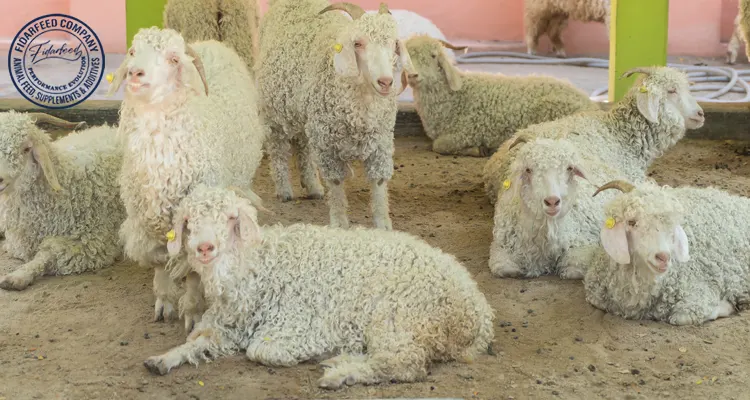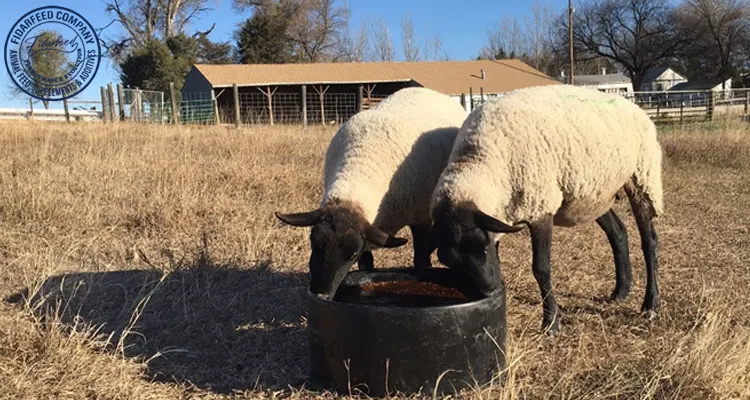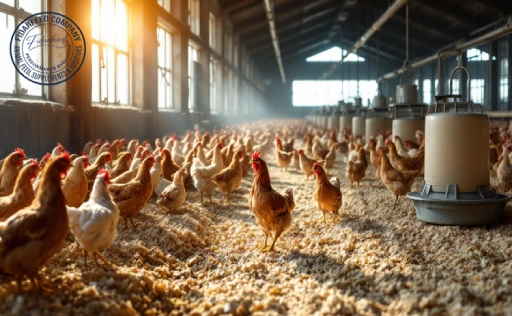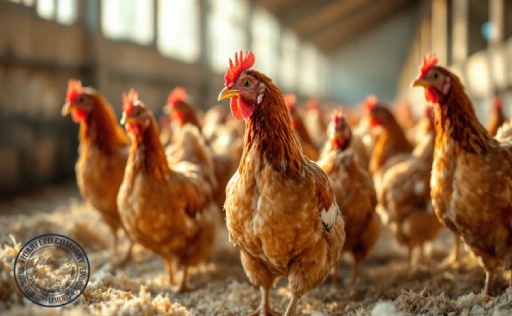Sheep breeders know that summer can be a challenging season. Mitigating heat stress in sheep is crucial to maintaining their health, productivity, and overall well-being. When temperatures soar, sheep struggle to regulate their body heat, leading to stress, decreased feed intake, lower weight gain, and even fatal consequences. Understanding how to recognize, prevent, and manage heat stress is essential for every breeder, whether experienced or new to the field. Let’s explore practical and effective solutions to help keep your flock comfortable during hot weather.
Understanding Heat Stress in Sheep: Why It Matters
Heat stress occurs when sheep cannot dissipate heat fast enough to maintain their normal body temperature. Unlike humans, sheep have limited sweating ability and rely mainly on respiration to release excess heat. High temperatures, humidity, lack of shade, and poor ventilation all contribute to the problem.
Learn more about: Active Probiotic Yeast for Large animal
Heat stress doesn’t just make sheep uncomfortable—it affects their growth rates, reproductive efficiency, milk production, and immune function. In severe cases, it can lead to heat exhaustion and death. Recognizing the importance of this issue and implementing preventive measures can make a significant difference in the overall health and productivity of your flock.
Signs and Symptoms: How to Detect Heat Stress Early
Detecting heat stress early can prevent severe health issues. Here are common signs to watch for:
Increased panting and open-mouth breathing: Sheep dissipate heat through rapid respiration, which is a primary indicator of distress.
Lethargy and reluctance to move: Heat-stressed sheep often appear weak, sluggish, and unwilling to graze.
Crowding near shade or water sources: If sheep constantly seek cooler areas, they may be struggling with heat stress.
Learn more about: The Essential Guide: How Do Sheep Help Farmers?
Loss of appetite and reduced milk production: Heat-stressed animals eat less, which can lead to lower body condition and weaker lambs.
Drooling and excessive salivation: This occurs as the animal attempts to cool itself through moisture loss.
Collapse or convulsions: In extreme cases, sheep may suffer heat stroke, which requires immediate intervention.
The Science Behind Heat Stress: How High Temperatures Impact Sheep
When exposed to extreme heat, sheep activate their thermoregulation mechanisms. Their normal body temperature ranges from 100.9°F to 103.8°F (38.3°C to 39.9°C), but heat stress can push this higher, leading to physiological strain.
Learn more about: The Complete Guide to Sheep Farming for Beginners
Heat stress impacts the digestive system, reducing rumination and nutrient absorption. It also suppresses immune responses, making sheep more vulnerable to diseases. Ewes may suffer reproductive failures, while rams experience reduced sperm quality. By understanding these effects, breeders can take proactive steps to mitigate risks.
Best Practices for Preventing Heat Stress in Sheep
Prevention is always better than treatment. Here’s how to minimize heat stress:
Provide ample shade: Trees, artificial shelters, or shade cloths reduce direct sun exposure.
Improve ventilation: Barns and pens should have proper airflow to dissipate heat.
Learn more about: How to Treat Ringworm in Sheep and Lambs: A Complete Guide
Adjust grazing schedules: Allow sheep to graze during cooler parts of the day, such as early morning and late evening.
Reduce stocking density: Overcrowding increases heat retention and stress.
Ensure proper bedding: Dry, clean bedding promotes comfort and reduces heat buildup.
Hydration and Nutrition: Essential Strategies for Keeping Sheep Cool
Water and diet play a vital role in temperature regulation.
Provide constant access to fresh, cool water: A single sheep may consume up to 12 liters per day in hot weather.
Use electrolyte supplements: Electrolytes help maintain hydration and prevent dehydration-related stress.
Learn more about: The Complete Guide: How to Run a Successful Sheep Farm
Adjust feed composition: High-fiber diets generate more metabolic heat. Replacing some fiber with energy-dense grains can reduce internal heat production.
Incorporate heat-resistant forage: Forages such as drought-tolerant legumes provide nutrition without excessive heat buildup during digestion.
Shearing and Coat Management: How Wool Affects Heat Regulation
Shearing plays a critical role in heat management, but timing matters.
Shear in late spring or early summer: Removing excess wool allows better air circulation around the body.
Avoid shearing too close to peak heat periods: A completely bare sheep is susceptible to sunburn. Leave a light layer of wool for protection.
Monitor wool regrowth: Wool can provide insulation against both heat and cold. Managing regrowth ensures optimal comfort.
Learn more about: Dorper Sheep Farming: Producing High-Quality Meat for Maximum Profit
Breeding for Heat Resilience: Selecting Hardy Sheep
Genetics influence how well sheep tolerate heat. Breeding for resilience can improve overall flock performance.
Select heat-tolerant breeds: Certain breeds, such as Dorper and Katahdin, naturally adapt better to warm climates.
Focus on reproductive efficiency: Heat-resistant ewes produce healthier lambs even under stressful conditions.
Use selective breeding: Identifying and breeding sheep that exhibit better heat tolerance can lead to a more resilient flock over time.
Emergency Actions: What to Do If Your Sheep Show Signs of Heat Stress
If a sheep is experiencing severe heat stress, immediate action is necessary:
- Move the animal to a shaded, well-ventilated area.
- Offer cool (not ice-cold) water to encourage drinking without shocking the system.
- Spray or sponge the sheep with cool water to promote evaporative cooling.
- Use fans or natural airflow to enhance heat dissipation.
- Call a veterinarian if the animal collapses or shows signs of heat stroke.
Learn more about: How to Control Internal Parasites in Sheep: Best Practices
Conclusion: A Proactive Approach to Keeping Sheep Healthy in Hot Weather
Managing heat stress in sheep requires a proactive approach, from providing shade and hydration to adjusting nutrition and selecting heat-tolerant breeds. By recognizing early warning signs and implementing preventive strategies, breeders can ensure their flock remains healthy and productive, even in extreme temperatures.
What are your experiences with managing heat stress in sheep? Share your thoughts in the comments below!








